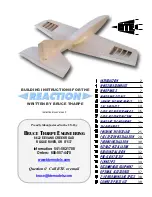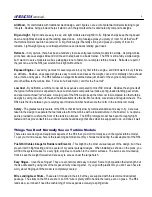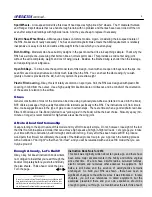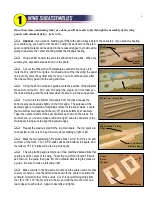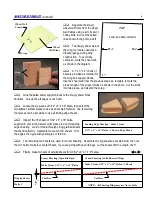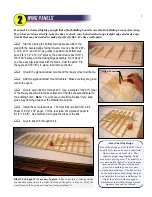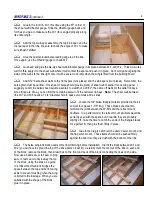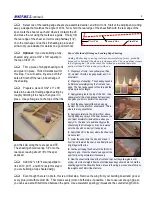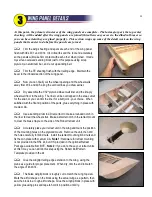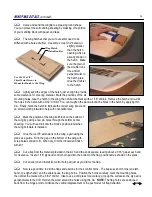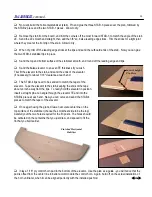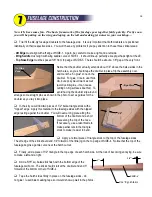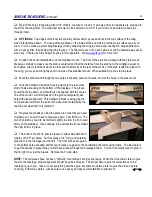
It cannot be stressed highly enough that a flat building board is essential to building a warp-free wing.
If you haven't done it lately, take the time to check your board with a long straight edge and make any
tweaks that may be needed to make it perfectly flat. It's time well spent!
Start by pinning the bottom main spar assembly to the
plan with the beveled edge facing forward. Use five ribs (W-2,W-
5, W-8, W-11, and W-13) as guides to position the bottom stub
spar (1/4" x 1/2" x 19-1/2" spruce), the bottom rear spar (3/16" x
3/8" x 36" balsa), and the trailing edge assembly. Don't worry if
you have any discrepancies with the plans - trust the parts! Pin
the spars and TE firmly in place, then remove the ribs.
Glue in the plywood retract mount and the lite-ply wheel well frame.
Add two plywood retract mount doublers. Make sure they are glued
well to the spars.
Glue in wing ribs W-2 through W-7. Use a triangle or the 90º corner
of the lite-ply shear web to make certain all of the ribs are perpendicular to
the building board.
Note:
You will save yourself trouble later if you keep
glue away from the area near the dihedral brace slots.
Install the servo lead tubes. The front tube is rolled from a full
sheet of 8-1/2" x 14" paper. For the rear tube, cut a piece of paper to
8-1/2" x 6-3/8". Use medium CA to glue the tubes to the ribs.
Glue in ribs W-8 through W-14.
Ribs W-2 through W-14 are now in place.
I like to use thin CA during initial
construction when there is a tight fit between the parts. Later on, all of the
wood joints will be given a second coat using medium CA.
7
About The Wing Design
One of the design goals of the R54 was to
be able to fly into and out of a short field,
like we have at my local club. That
requires a light wing loading, which
means lots of wing area! The airfoil is a
very unscientific shape I've used on many
sport models in the past, which puts a
priority on building ease over pure
aerodynamic efficiency. The flat portion
on the bottom helps keep things straight
and simplifies the retract installation. In
flight, the airfoil is close enough to
symmetrical that it flies through outside
maneuvers as easily as inside.
Align Corners
Summary of Contents for Reaction 54
Page 1: ...INSTRUCTION BOOK...


